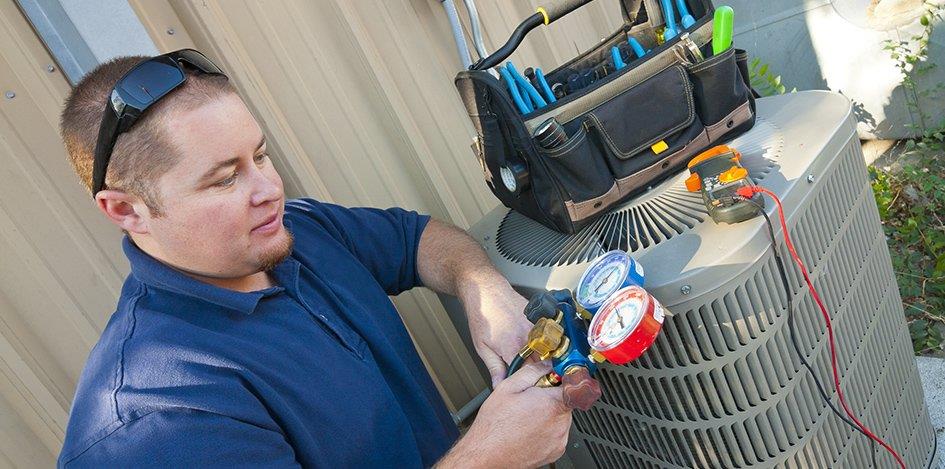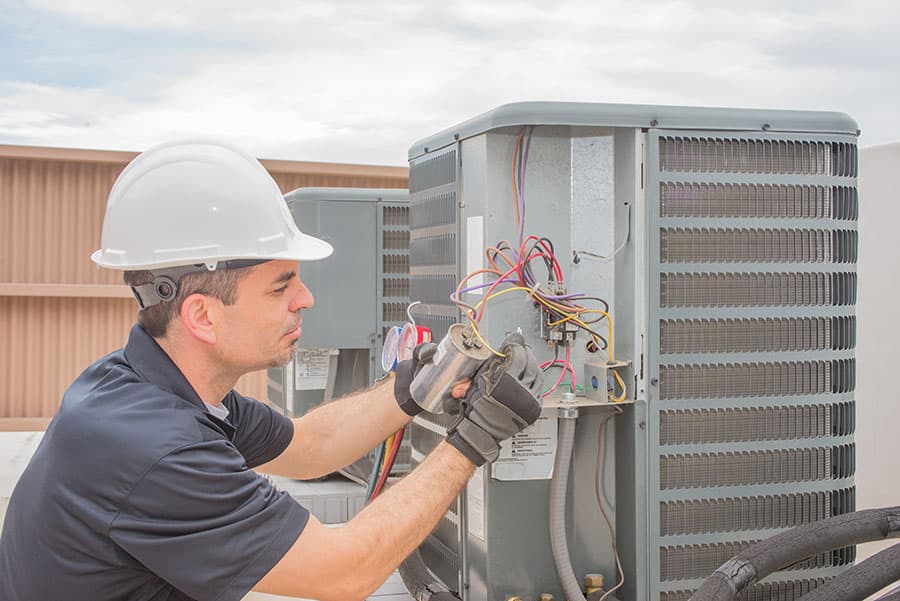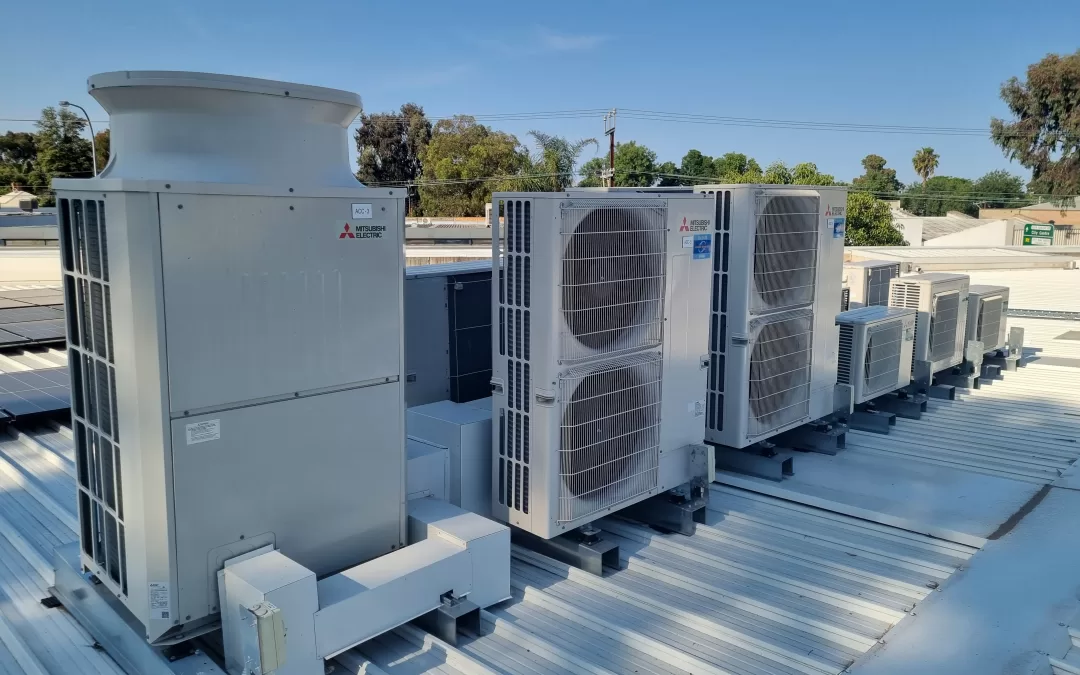Discovering the Crucial Elements of an Efficient HVAC System
An effective HVAC system is constructed on several critical components that operate in consistency. Each component, from the thermostat to the ductwork, plays an essential function in preserving convenience and energy effectiveness. Comprehending these components is important for enhancing efficiency and boosting indoor air high quality. As one checks out these elements, the elaborate partnerships in between them disclose insights into enhancing general system effectiveness. What certain aspects add most to this effectiveness?
The Role of the Thermostat in Cooling And Heating Efficiency

Frequently forgotten, the thermostat plays a vital role in the performance of Heating and cooling systems. This small device works as the primary nerve center, regulating temperature settings and making certain perfect convenience within an area. By precisely picking up the ambient temperature level, the thermostat connects with the home heating, air flow, and air conditioning devices to preserve the desired climate
An effective thermostat minimizes power usage by activating the cooling and heating system only when essential, consequently avoiding too much heating or cooling. Modern smart and programmable thermostats boost this efficiency additionally by permitting customers to set routines and remotely adjust settings, adapting to everyday regimens.
The positioning of the thermostat is vital; improper place can lead to inaccurate temperature level readings, resulting in ineffective procedure. Generally, a well-functioning thermostat not just improves convenience but also adds considerably to power financial savings and the longevity of the a/c system.
Understanding the Value of Air Filters
Air filters serve a necessary function in heating and cooling systems by assuring that the air flowing within a room remains clean and healthy and balanced. These filters catch dirt, irritants, and various other pollutants, avoiding them from being recirculated throughout the atmosphere. By capturing these fragments, air filters add to improved indoor air high quality, which can significantly profit owners' wellness, especially those with allergic reactions or breathing problems.
In addition, maintaining tidy air filters improves the efficiency of HVAC systems. Clogged filters can restrict air movement, creating the system to work more difficult to keep preferred temperatures, resulting in boosted energy usage and higher energy bills. Consistently changing or cleaning filters is an important maintenance action that can prolong the life expectancy of a/c equipment. Inevitably, comprehending the value of air filters enables homeowners and structure managers to take proactive actions to ensure a well-functioning, reliable a/c system that advertises a comfy and safe interior setting.

The Capability of the Heating System and Heatpump
Heaters and heatpump are critical parts of cooling and heating systems, accountable for offering warmth during chillier months. Furnaces operate by heating air through combustion or electric resistance, after that distributing it throughout the home via air ducts. They typically supply quick heating and can be sustained by natural gas, electrical power, or oil, depending upon the system kind.
Conversely, heatpump move warm instead than produce it. They remove warmth from the outside air or ground, also in reduced temperatures, and move it indoors. HVAC experts. This double functionality allows warmth pumps to likewise provide cooling in warmer months, making them flexible options for year-round climate control
Both systems call for proper maintenance to ensure efficiency and durability. While heaters master extreme cold, heatpump can be beneficial in modest environments. Comprehending their distinct capabilities help house owners in picking the most suitable option for their heating requires.
Checking Out the A/c Unit
The cooling device is a crucial part of a/c systems, readily available in different types to match various needs. Understanding the effectiveness ratings of these devices is crucial for making informed choices about energy consumption and expense. This area will certainly check out the diverse kinds of a/c unit and clarify how performance rankings influence efficiency.
Kinds Of Air Conditioners
While numerous factors influence the selection of cooling systems, recognizing the different types available is important for house owners and building supervisors alike. Central air conditioning conditioners are created to cool whole homes or buildings, utilizing a network of ducts for air flow. Window systems provide a more localized remedy, ideal for little spaces or single areas. Portable a/c unit offer flexibility, permitting individuals to move the unit as required. Ductless mini-split systems are one more option, integrating the effectiveness of central systems with the benefit of zoning, as they require no ductwork. Geothermal systems harness the earth's temperature for energy-efficient cooling. Each kind includes distinct advantages, making educated options necessary for effective environment control.

Efficiency Rankings Described
Understanding effectiveness ratings is necessary for picking the best air conditioning device, as these metrics offer insight right into the system's efficiency and power usage. One of the most typical rating for air conditioning unit is the Seasonal Power Effectiveness Proportion (SEER), which determines the cooling result during a regular cooling season divided by the overall electric energy input. A higher SEER indicates better efficiency. Additionally, the Energy Efficiency Ratio (EER) is utilized for determining performance under certain problems. An additional vital metric is the Energy Celebrity accreditation, which indicates that an unit fulfills rigorous energy effectiveness standards. By assessing these rankings, customers can make informed choices that not only maximize convenience yet also reduce power prices and environmental impact.
The Importance of Ductwork and Air flow
Effective ductwork style and air flow monitoring play essential functions in the total efficiency and performance of a/c systems. Correct ductwork warranties that conditioned air is distributed evenly throughout a space, minimizing temperature level changes and improving comfort. Well-designed ducts reduce resistance to air flow, lowering the workload on a/c tools and eventually reducing power usage.
Air movement administration includes tactically placing vents and signs up to boost the circulation of air. This protects against typical problems such as warm or cool places, which can happen when air flow is obstructed or inadequately balanced. Furthermore, the appropriate read more air duct materials and insulation can even more improve effectiveness by minimizing warmth loss or gain throughout air transit.
An efficient ductwork system not only adds to power cost savings but can likewise extend the life expectancy of a/c equipment by reducing unneeded pressure (HVAC experts). Recognizing the value of ductwork and air flow is essential for achieving peak Cooling and heating system efficiency.
Routine Maintenance Practices to Boost Performance
Routine upkeep methods are necessary for guaranteeing peak efficiency of cooling and heating systems. These methods include regular inspections, cleaning, and required fixings to keep the system running efficiently. Consistently changing air filters is vital, as clogged filters can block air movement and decrease efficiency. On top of that, technicians must examine and clean evaporator and condenser coils to avoid getting too hot and energy wastage.
Yearly professional examinations are also suggested, as trained professionals can identify prospective concerns before they intensify. Lubing relocating components decreases damage, adding to a much longer lifespan for the system. Additionally, ensuring that the thermostat works properly help in maintaining excellent temperature control.

Often Asked Concerns
Just how Frequently Should I Replace My Thermostat?
Thermostats need to normally be changed every 5 to 10 years, depending on usage and technology innovations. Regular checks are recommended to guarantee peak performance, specifically if experiencing irregular temperature level control or boosted power expenses.
What Size Air Filter Is Best for My Cooling And Heating System?
The very best dimension air filter for an a/c system differs by unit design. Usually, it's crucial to speak with the proprietor's handbook or examine the existing filter measurements to guarantee peak performance and air quality.
Can I Install a Heatpump Myself?
Installing a heat pump separately is possible for proficient people, but it needs expertise of local codes and electrical systems. Working with an expert is suggested to guarantee appropriate setup and optimal system performance.
Just how Do I Know if My Ductwork Is Effective?
To establish ductwork performance, one must inspect for leaks, procedure air movement at vents, check insulation high quality, and assess temperature differences between supply and return ducts. Specialist evaluations can provide detailed understandings into general efficiency.
What Are Indicators My Cooling And Heating Requirements Immediate Maintenance?
Indicators that a heating and cooling system needs immediate upkeep include uncommon sounds, irregular temperatures, increased power costs, undesirable odors, and regular biking. Dealing with these issues quickly can avoid additional damage and assurance peak system performance.
Air filters offer an essential feature in Heating and cooling systems by ensuring that the air flowing within a space remains tidy and healthy and balanced. In addition, maintaining tidy air filters improves the performance of HVAC systems. Ductless mini-split systems are an additional option, integrating the performance of central systems with the comfort of zoning, as they require no ductwork. Comprehending performance ratings is important for picking the right air conditioning unit, as these metrics give understanding right into the system's performance and energy usage. The finest size air filter for a HVAC system varies by system layout.